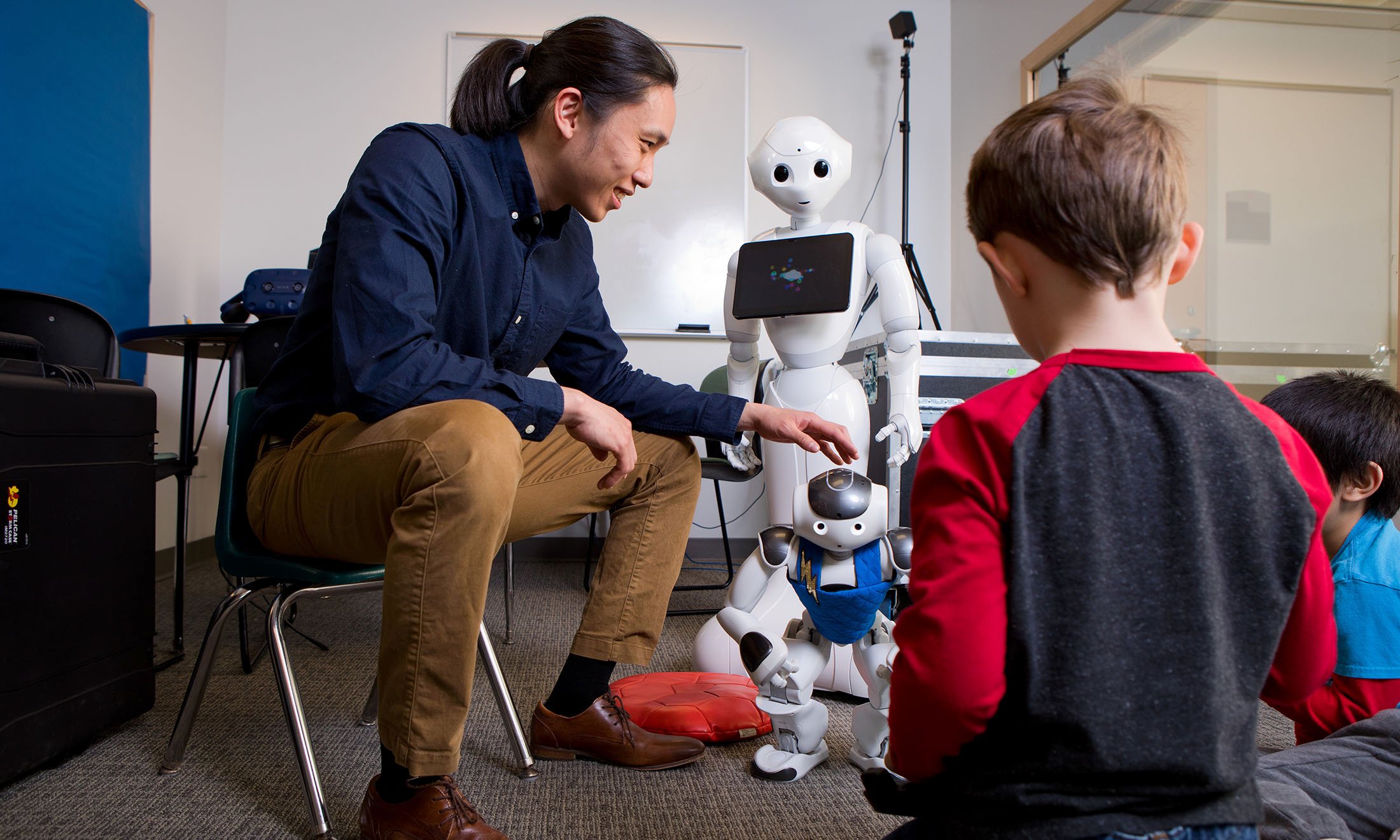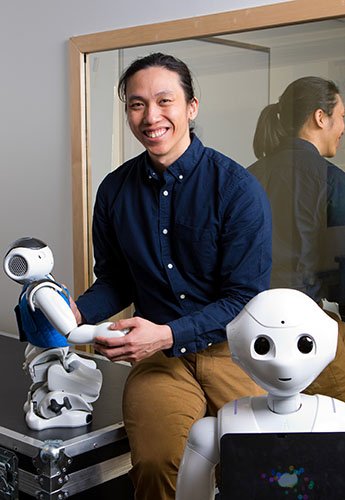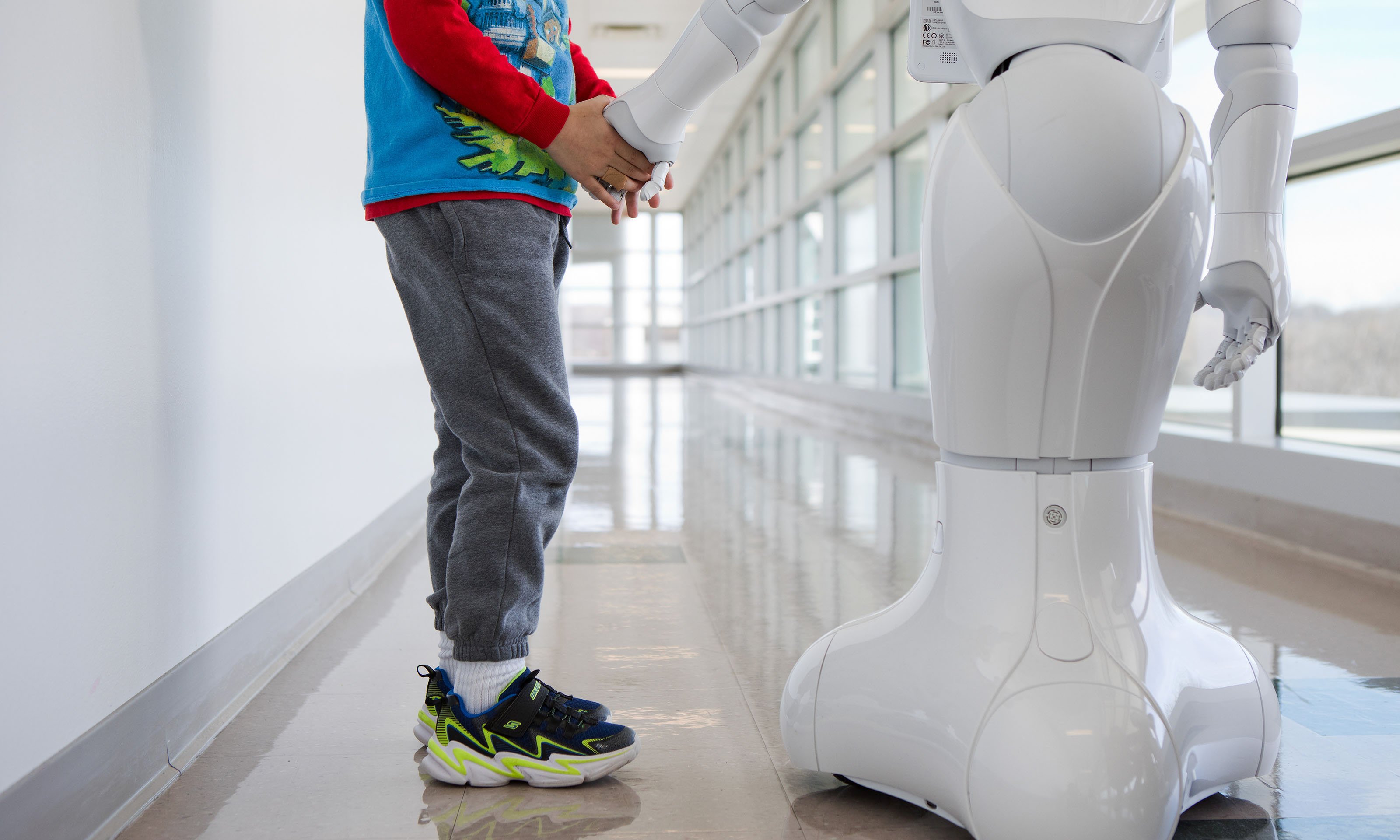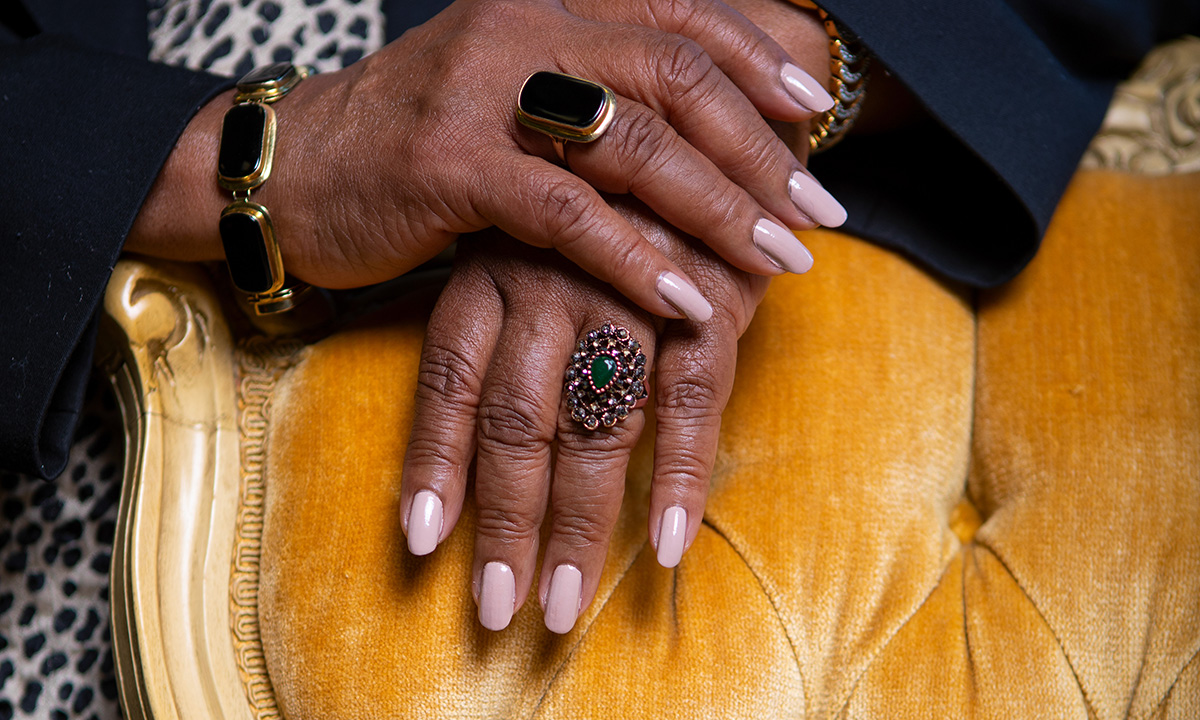- YouTube
- TikTok
The Future of Care
Social robots offer new opportunities in patient care

Dr. Louie uses his social robots to teach children in the university’s Applied Behavior Analysis clinic. Photo by Garrett MacLean
In an era of increasing isolation, how can people learn, grow or even take care of one another? The surprising solution might sit in the field of social robots. And at Oakland University, researchers are figuring out just how to take this technology into the most important areas of life.
Wing-Yue Geoffrey Louie, Ph.D., is an assistant professor of electrical and computer engineering at Oakland University’s School of Engineering and Computer Science. He started his work with robots helping elderly dementia patients in a long-term care facility. “There were older adults who haven’t even used email,” Dr. Louie says. “But they enjoyed interacting with the robot.”
 |
| Dr. Louie with two of his social robots. Photo by Garrett MacLean |
According to Dr. Louie, social robots can assist the elderly with chores like laundry and dishes, plus remind them to take medicine at the proper times. More astonishingly, these robots can be programmed to look for signs of increasing dementia or declining health and report concerns back to health care workers.
After coming to Oakland University, Dr. Louie learned of work being done within the School of Education and Human Services on using Applied Behavior Analysis (ABA) techniques for children with autism spectrum disorder (ASD). After meeting with ABA clinic director, Associate Professor Jessica Korneder, Ph.D., the idea to marry OU’s ABA work with Dr. Louie’s social robots was born.
Dr. Louie and his students have been developing social robots to teach children with ASD and help them learn a variety of skills. He has 7-10 robots in development at any given time and modifies the experience based on his research on children’s interactions.
“There are a lot of factors to consider,” Dr. Louie explains. “I’ll go in thinking a robot is scary and people will love it. Or I think children will love a robot and they don’t. But then you change the voice and all of a sudden you have engagement. There are little things like the intonation changes or length of speech that modify how people interact with it. You just have to test it to see what happens.”
For Dr. Louie’s OU graduate and undergraduate students, the social robot work is an experience beyond just the nuts and bolts of engineering. He says social robot development sits at the intersection of engineering, psychology, sociology, computer science, health care, teaching, artificial intelligence, and more. But the aim is always the same: improving the lives of people.
“I want to find the areas that they will help,” Dr. Louie says. “Robots don’t get tired and they don’t get upset. They continue to do things that can be more challenging for humans … And you don’t receive judgment from a robot — it’s just the robot doing its robot thing.”
Discover more of Dr. Louie’s social robots.
 |
| A child enrolled in the ABA Clinic walks down the Pawley Hall hallway, holding hands with one of Dr. Louie’s social robots. Photo by Garrett MacLean |


 May 17, 2021
May 17, 2021 By Laura Phillips
By Laura Phillips

